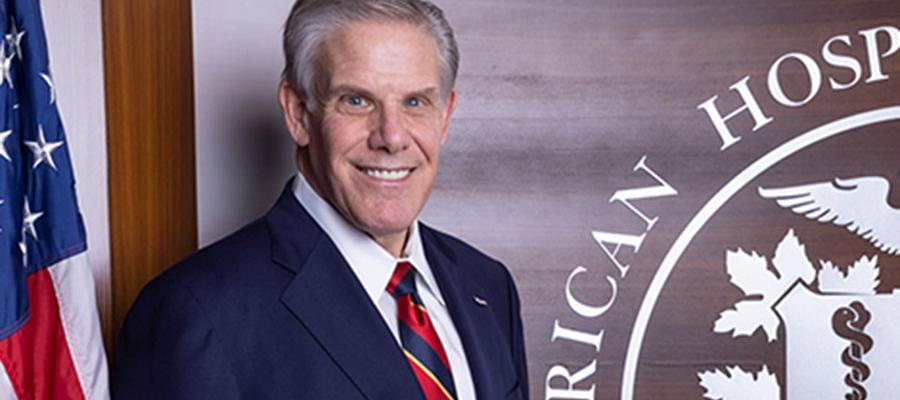Perspective: Workforce Remains the Top Priority and Challenge for 2022

Turn on the TV or open a newspaper these days and you’re likely to see a story that isn’t “news” at all to our stressed and burned-out care providers. The headline: They need help so they can continue helping others.
We at AHA have worked hard, as many of you have, to get the message out that moving into year three of the pandemic — once again facing a dramatic surge in caseloads spurred by the omicron and delta variants and in many cases accompanied by a staffing shortage for patients in hospital beds — the relentless and crushing workload on our steadfast caregivers cannot continue indefinitely.
Our workforce challenges are a national emergency that demands immediate attention. Without a resilient and sufficient health care workforce, we cannot exist. Our entire health care system breaks down. It's as simple as that.
Hospitals and health systems know this all too well, and they are taking proactive steps to assist and retain their skilled, invaluable workforce.
For example, in Virginia, Mary Washington Healthcare collaborated with a local community college on a clinical education model allowing student nurses to support the current nurse workforce before they had graduated, addressing the critical demand for more nurses. In Pennsylvania, Geisinger provides $40,000 in financial support each year for up to 175 employees who want to pursue a nursing career and make a five-year work commitment as an inpatient nurse. And in Maine, Northern Light Maine Coast Hospital invites financial support from the local community to help underwrite the cost of programs to train future nurses and medical assistants and alleviate a crucial shortage of these professionals.
At the same time, there are steps we are pursuing at the federal level that can help to address workforce shortages and build a pipeline for the future. Just last week, we were successful in having the Administration expedite immigration visas for all foreign, highly trained health care personnel who can make an immediate contribution to helping address the workforce shortages.
Among other actions, we will:
- Continue to work with Congress, the Biden Administration and other partners to expand the number of Medicare-funded physician residencies, boost support for nursing schools and faculty, and provide scholarships and loan repayment for certain providers.
- Press for quick enactment of the Dr. Lorna Breen Health Care Provider Protection Act, which would fund new well-being and behavioral health services programs for health care workers.
- Continue to shape the Build Back Better Act, which contains billions in funding we fought for to support programs such as medical school education in underserved areas, the National Health Service Corps, and the Nurse Corp, among others.
- Work with state hospital associations to encourage efforts to expand scope of practice laws allowing health care professionals to practice at the top of their licenses, while also working to put a halt to health insurers’ burdensome practices that take caregivers away from the bedside and increase provider burnout.
- Strongly urge the disbursement of the billions remaining in the Provider Relief Fund by the end of March, as well as replenishing the fund to help providers cope with increased staffing costs.
- Work with an AHA Board-appointed task force to identify and activate now, near and far efforts to rescue our current workforce and assure the future supply of needed health care professionals.
None of these actions is an instant solution. But taken together, they provide a path to restoring a robust workforce capacity and alleviating some of the pressure on the people who remain in the thick of the fight every day.
Ensuring that our caregivers have the resources, policies and support they need to safeguard access to care in our communities today and for years to come…that’s a New Year’s resolution we can all get behind.

